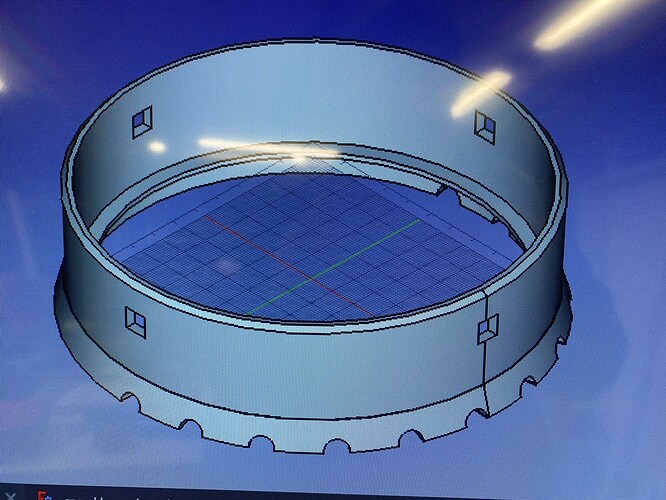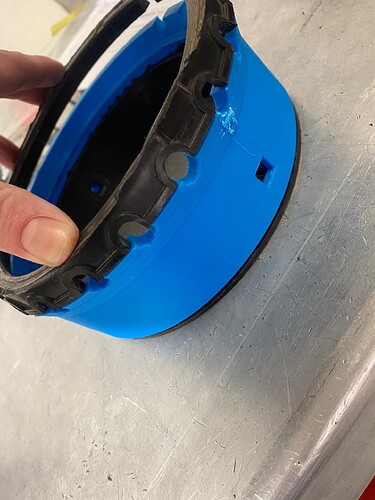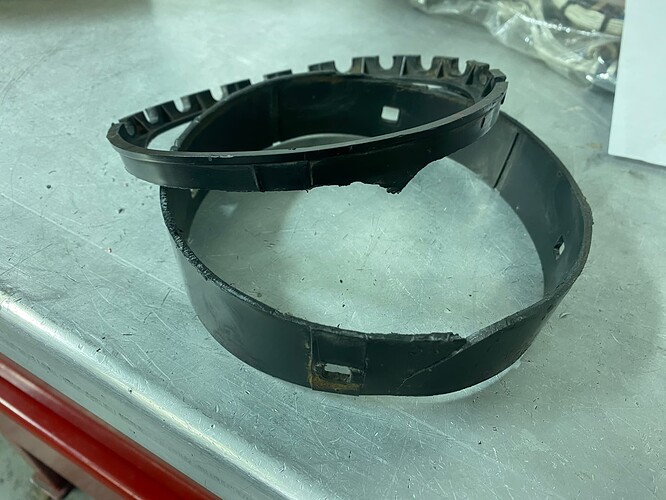I’m not a lawyer, so don’t take this as advice.
If your version doesn’t have a logo (doesn’t say craftsman, or Kleenex, or whatever), and it is obvious it is not coming from craftsman, then I think you are in the clear on trademarks. You can’t sell lemonde and say it is minutemaid. That infringes on trademarks.
There may be a patent on that technology, but they are not enforced unless someone is going to get a big pay day (like samsung suing google or something). Besides, the patent would probably be on how they made the part, or how several pieces interact.
They almost certainly have a copyright on the original design. There is an original CAD or paper copy somewhere that they used to create it. They could argue about how the part looks like the same art, and there were a lot of other ways to make that part without their art. At best, it is a gray area w.r.t. copyright.
But there is also a practical argument here. For one thing, you can’t use this part unless you’ve already paid craftsman. Most brands leave you alone if you are building a community around their products. They will see this as a craftsman fan doing free advertising and giving free support to their existing customers. This is the same reason you can post a gif of a popular tv show and the networks don’t come after you. It is very rare to see that kind of aggression towards 3D printers. Additionally, they will probably just send a letter to thingiverse and they will take it down. It probably won’t put you at any risk.
There was a case recently where honda (well, one part) told printables to take down every model related to Honda. Most people in the community were a bit shocked, and thought it was a dumb move by honda:
But Honda didn’t go after people in court. But they made it clear they didn’t want parts on printables. Morally, I think you can shake your head, but you have to respect it.
So your possible good outcomes are:
- You only copied function, not art. You probably won’t be able to even argue this point though. It would cost too much to get in front of a judge.
- Craftsman won’t care, or after they have a think, they will appreciate what you’re doing. If you search craftsman on thingiverse or printables, look at how many things are out there.
- If craftsman ever cares, they will just ask TV or printables to take it down.
As for what license to use on your part, if it is truely not infringing on their copyright, then you can do what you want. If it is, then making it non commercial might help you avoid them caring. If a popular repair part started showing us as prints on ebay, they may be more likely to go back to the source and ask you to take it down. Posting it with non commercial, those ebay printers would be getting themselves in trouble. I think it is a long shot though.
This is all interesting to talk about. But again, I am not a lawyer. I have made a lot of similar parts and posted them. I feel confident doing this. But you have to decide your own level of risk.




 Make a French Cleat wall for your blowdriers and scissors!
Make a French Cleat wall for your blowdriers and scissors! 